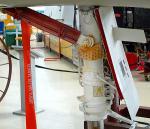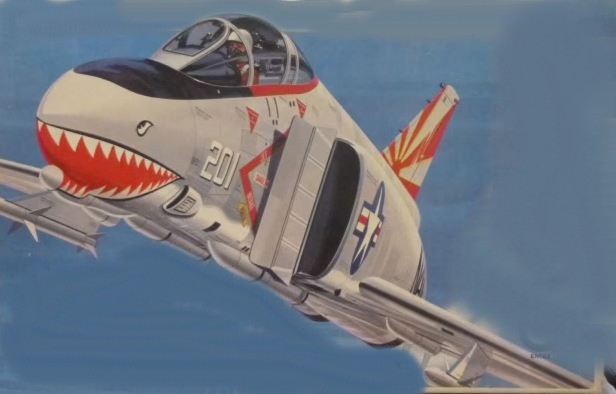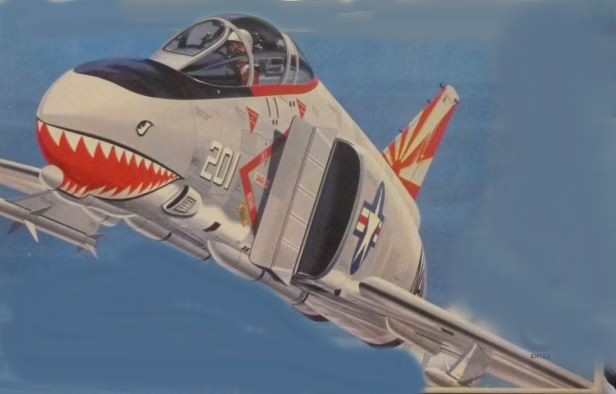
|
||||||||||||||||||||||||||||||||
McDonnell F-4A Phantom II
Le F4H1 fut la première version initiale de production du Phantom II pour l’US Navy Comme le réacteur J79-GE-8 initialement prévu pour le Phantom n'était pas disponible, les 45 premiers F4H-1S récurent deux réacteurs J79-GE-2 ou-2A avec postcombustion Afin de les différencier des modèles équipés de réacteur J79-GE--8, ils furent rebaptisés F4H-1F, le F indiquant l'utilisation du J79-GE-2 ou-2A. Parmi les changements externes présents sur le F4H-1 a été l'introduction de 2 entrées d’air au niveau du tube de Pitot pour le système de climatisation, qui remplace les entrées d’air encastrés des prototypes montés sur le nez en avant, juste derrière le radôme. En étant plus loin du fuselage ils produisaient plus de trainée mais cela ne fut pas considéré comme une gène loin de là Les essais furent effectués par le F4 BuNo 143391 BuNo, à bord de l’USS Independence (CVA-62) le 15 Février 1960 suivit des tests au NATC(Naval Air Test Center) de Patuxent River, en Juillet 1960. Lors des essais de nombreuses modifications ont été progressivement intégrés sur le F4H-1. Les lots 2 et 3 avec 21 avions ont été considérés comme des lots de pré-production, alors que les 24 autres avions furent considérés comme avions de serie avec une motorisation J79-GE-2 ou-2A. Les changements les plus significatifs ont porté les entrées de prise d’air qui fut testée sur le F4H-1 BuNo. 145307 Le radar installé sur le F4H 1F fut le I / J-band APQ-72, parfois catalogué sous le nom de AN/APQ-50 (MOD). Sous les ailes nous trouvons 11 pylônes d'origine dont 9 ont une capacité d’emport de missile chaque port peut supporter une paire de Sidewinder Un capteur infrarouge de recherche et de suivi a été ajouté dans un renflement sous le radôme( AAA-4 ) Il équipé le 5° F4H-1F BuNo 143390 Ce capteur a été le deuxième capteur IR à entrer en service après ceux utilisés en URSS. Il fourni des informations au radar Une perche de ravitaillement en vol escamotable a été ajoutée sur le côté droit du cockpit. Il est presque invisible escamoté à l’intérieur. Il se déploie une fois sorti sur 1.21m à la droite du pare-brise. Le montage de cette perche de ravitaillement entraine la disparition de la console d’instrument dans le cockpit arrière et la redistribution de ceux-ci ailleurs . Le train avant peut pivoter sur 360°Le système d’arme'AJB-3 est monté sur l’avion avec un couplé à divers systèmes informatiques et de communication comme l’ASQ Collins-19 Mais les premiers avions ne sont pas encore capable d’utiliser pleinement ces nouveaux systèmes. Le lot N° 3 présente un nouveau poste de pilotage et un nouveau et plus grand nez. De plus pour répondre aux plaintes des équipages sur la mauvaise visibilité, McDonnell redessiné le poste de pilotage et position le siège arrière de 58 cm De plus le cockpit est plus spacieux Cet aménagement procure une meilleure vision pour le pilote, et au navigateur ..La hausse de la canopée améliore la visibilité avant du pilote et de l’'opérateur radar En outre, l’avion possède une version modernisée du radar avec un radôme plus large . L’antenne de81 cm monté sur le radar Westinghouse AN/APQ-72 remplace l’antenne de 60cm du Mod AN/APQ-50 Ce radar AN/APQ-72 incorporé un illuminateur APP-157 CW offrant la possibilité de pouvoir tirer le missile AIM-7 Sparrow. Le premier exemple a recevoir ces modifications fut le BuNo 146817 du lot 3 Le BuNo 145310 4° avion de série est équipé de plots pour le largage de bombe qui lui permettent d’emporter 22 bombes de225 kgs sous le fuselage et les sections d'aile intérieure. Cependant, le Phantom II était à l'époque considéré avant tout comme un intercepteur maritime avec la capacité de pouvoir être employé comme chasseur bombardier De coup de système n'a été adopté que pour les séries de F-4S ou B. Elle donna naissance plus tard au F-4C avion d'appui tactique de l'USAF. Plus tard les F-4A incorporant tous ces changements ont été remotorisés avec des par J79-GE-8 Les essais initiaux furent effectués par ‘avion BuNo143391, sur l'USS Independence (CVA-62) le 15 Février, 1960. Avec emport de bombes factices Une deuxième série d'essais fut réalisée sur l’'USS Intrepid en avril 1960. Les essais se sont achevés sur un bilan positif seule la crosse d’appontage a du être modifiée Les essais se poursuivent ensuite à NATC Patuxent River, en Juillet 1960. Dès 1960, l'US Navy commence à transformer sur Phantom II le Replacement Air Group (RAG), un escadron destiné à former les futurs pilotes et opérateurs radar Le 1° RAG fut le VF-101, initialement basé à Key West, en Floride. L’US Navy n’avait plus utilisé de chasseur biplace depuis le F3D Douglas-2 Skyknight et la guerre de Corée, Les Skyknight stockés à Litchfield Park en Arizona (cimetière d’avions ) ont été déstockés et converti s en avions formateur sous la désignation F3D-2T-2 plus tard modifié en TF-10B en 1962 . Le 2e RAG a été VF-121 basé à NAS Miramar en Californie. Le 5 Septembre 1960, Lt.Col. Thomas H. Miller de l’USMC avec le F4H-1 BuNo 145311 bat le record de vitesse sur 500 km en circuit fermé à plus 1958km /h. Le 25 Septembre 1960, le commandant John F. "Jeff" Davis vole a 2237.km/k en moyenne sur 100 km en circuit fermées dans le désert de Mojave. L’US Navy se lance dans la compétition avec le projet Sageburner , destiné à établir de nouveaux records de vitesse à basse altitude avec les Phantom de l’US Navy mais cela se termine en tragédie lorsque le 18 Mai 1961, le commandant de JL Felsman se tue à bord du F4H-1F BuNo 145316 qui s’écrase lors d’un vol pour établir un nouveau record de vitesse à faible altitude. L’US Navy établir ensuite un nouveau record de vitesse à faible altitude le 28 août 1961,avec le F4H-1F BuNo 145307 à une vitesse moyenne de 1452 km/h sur 3 km à faible altitude à White Sands Missile Range au Nouveau Mexique. Le Phantom II BuNo 145307 a été remis au National Air and Space Museum. L e 18 Septembre 1962, le F4H 1motorisé par un J79-GE-2/2A a été rebaptisé F-4A en conformité avec le Tri-Service designation system. Celui motorise avec un J79-GE-8 F4H a été rebaptisé F-4B. Seulement 45 F-4AS ont été construits avant que la production du F-4B démarre . La plupart des 45F-4A construits vont servir dans les tests et la formation, très peu seront versés en escadre Peu de survivants de ces avions se trouvent dans les musées Le BuNo 143388 se trouve au Musée US Marine Corps le BuNo 148275 se trouve à US Naval Academy Le BuNo 145307 en stockage Le BuNo 148273 se trouve à l Air Victory muséum Serials of F-4A 143388/143392 McDonnell F4H-1F (F-4A-1-MC) 145307/145317 McDonnell F4H-1F (F-4A-2-MC) 146817/146821 McDonnell F4H-1F (F-4A-3-MC) 148252/148261 McDonnell F4H-1F (F-4A-4-MC) 148262/148275 McDonnell F4H-1F (F-4A-5-MC) McDonnell F-4A Phantom II
The F4H-1 was the initial production version of the Phantom for the United States Navy. Since the J79-GE-8s originally intended for the Phantom were still not available, the first 45 F4H-1s which had been ordered were powered by a pair of 16,150 lb.s.t. afterburning J79-GE-2 or -2A engines. In order to distinguish these planes from later models powered by -8 engines, on May 1, 1961 they were redesignated F4H-1F, the F indicating the use of a special powerplant.
Among the external changes introduced on the F4H-1 was the introduction of a pair of plain pitot inlets for the air-conditioning system, which replaced the flush-mounted recessed ram intakes of the two prototypes. These were mounted on the forward nose just behind the radome. They stood away from the fuselage skin, producing more drag than the flush-mounted units of the two prototypes. However, the increased pressure recovery was deemed to be worth the extra drag. Initial carrier trials were carried out by BuNo 143391, which was first launched and recovered aboard the USS Independence (CVA-62) on February 15, 1960. Board of Inspection and Survey trials began at NATC Patuxent River in July of 1960. During test and evaluation, numerous changes were progressively incorporated in the F4H-1. Blocks 2 and 3 were regarded as pre-production, with the remaining 24 being production machines. The standard engine for both blocks was the J79-GE-2 or -2A. Among the most significant of the changes incorporated during the production run of the F4H-1 was a change in the geometry of the air intakes. This new intake geometry was first fitted to F4H-1 BuNo. 145307, The radar fitted to the early F4H-1F was the I/J-band APQ-72, This radar was sometimes referred to as the AN/APQ-50 (Mod). Attachments for five (and later 9) of the original 11 pylons were restored, with the inboard wing pylons each carrying either an extra Sparrow or a pair of Sidewinders (one on each side of the pylon). An AAA-4 infrared search and tracking sensor was added in a prominent bulge underneath the radome. It was fitted (or retrofitted) from F4H-1F number 5 (143390) onward. This sensor was only the second IR sensor to enter service outside the USSR. It required radar data for range information. A retractable inflight refuelling probe was added to the right side of the cockpit. When retracted it was almost invisible, but when extended it protruded out about 1.21 to the right of the windshield. The mounting of this probe required the elimination of the right console in the rear cockpit and the redistribution of some instruments. 360 degree steering capability for the nose landing gear was introduced. The AJB-3 weapons delivery set incorporating a loft/toss-bombing computer was fitted, as well as the Collins ASQ-19 communications/navigational/identification package. However, these early aircraft were not capable of achieving full operational capability with these systems Production block 3 introduced a new cockpit and a new and larger nose. In the interest of aerodynamic efficiency, the top line of the rear-seat canopy of the Phantom was initially flush with the top of the rear fuselage. This arrangement was found to offer inadequate forward view for the pilot, a critical requirement for a carrier-based aircraft. In response to crew complaints about poor visibility, McDonnell redesigned the cockpit and raised the seats 23 inches higher and fitted new and more capacious cockpits. This raised the canopies over the top line of the fuselage and improved forward visibility for the pilot and increased headroom for the radar intercept operator sitting in the rear seat. In addition, a revised and larger radome was fitted in order to provide space for the new 32-inch dish that was fitted to the Westinghouse AN/APQ-72 radar in place of the AN/APQ-50 Mod and its 24-inch dish.. This AN/APQ-72 radar incorporated an APA-157 CW illuminator to provide AIM-7 Sparrow compatibility. Both the new radar and the revised cockpit were initially fitted to F4H-1F BuNo 146817, the first example of production block 3. The BuNo 145310 (the ninth F4H-1F and the fourth production machine) was fitted with multiple bomb racks which enabled it to carry as many as 22 225 kgs bombs underneath the fuselage and inner wing sections. However, the Phantom was at that time viewed primarily as a shipboard interceptor with only a secondary attack capability, and this system was not adopted for production F-4As or Bs. However, it led later to the F-4C tactical fighter for the USAF In service, most late F-4As incorporating all of these changes were re-engined with J79-GE-8 engines Initial carrier trials were carried out by BuNo 143391, which was first launched and recovered aboard the USS Independence (CVA-62) on February 15, 1960. It even operated with dummy bombs on the centerline. A second set of trials was conducted aboard the much-smaller USS Intrepid in April of 1960. Trials were generally satisfactory, although there were some adjustments that had to be made to the carrier arrester hook. Board of Inspection and Survey trials began at NATC Patuxent River in July of 1960. As early as 1960, the US Navy began to form the first Phantom-equipped Replacement Air Group (RAG), a squadron designed to train future pilots and backseat radar interception operators. The first RAG was VF-101, based initially at Key West, Florida. VF-101 Since the Navy had not operated a two-seat fighter since the Douglas F3D-2 Skyknight of Korean War vintage, several Skyknights were rescued from the boneyard at Litchfield Park in Arizona and converted to the training role under the designation F3D-2T-2 (later changed to TF-10B in 1962). The other early Phantom RAG was VF-121 based at NAS Miramar in California. When serving with the VF-101 and VF-121 replacement squadrons, the F-4As were sometimes designated TF-4A to reflect the fact that they were not considered as being up to combat standards. On September 5, 1960, Marine Lt.Col. Thomas H. Miller used F4H-1 BuNo 145311 to set a new 500-km closed-circuit speed record of 1958km/h. On September 25, 1960, Commander John F. "Jeff" Davis averaged 2237.km/k over a 100-km closed course over the Mojave Desert. On September 18, 1962, the J79-GE-2/2A powered F4H-1F was redesignated F-4A in accordance with the new Tri-Service designation system. The J79-GE-8 powered F4H-1 was redesignated F-4B. Only 45 F-4As were built before production switched over to the F-4B. Most of the 45 F-4As built served in research and training roles, and very few ever reached squadron service as they were not considered fully operational. Aircraft from Block 3 onward served in the East Coat and West Coast RAGs to train crews and to perfect operational techniques. Only a handful of F-4As remain BuNo 143388 is in the US Marine Corps Museum BuNo 148275 is at the US Naval Academy. BuNo 145307 is presumably kept at the Paul Garber facility, awaiting a suitable display location. BuNo 148273 was in Air Victory museum Serials of F-4A 143388/143392 McDonnell F4H-1F (F-4A-1-MC) 145307/145317 McDonnell F4H-1F (F-4A-2-MC) 146817/146821 McDonnell F4H-1F (F-4A-3-MC) 148252/148261 McDonnell F4H-1F (F-4A-4-MC) 148262/148275 McDonnell F4H-1F (F-4A-5-MC) |
|
Droit d’auteur La plupart des photographies publiées sur ce site sont la propriété exclusive de © Claude Balmefrezol Elles peuvent être reproduites pour une utilisation personnelle, mais l’autorisation préalable de leur auteur est nécessaire pour être exploitées dans un autre cadre (site web publications etc) Les sources des autres documents et illustrations sont mentionnées quand elles sont connues. Si une de ces pièces est protégée et que sa présence dans ces pages pose problème, elle sera retirée sur simple demande. Principaux Collaborateurs:
Nb
de visiteurs:8860395 Nb
de visiteurs aujourd'hui:633 Nb
de connectés:62
| ||||||||||||||||||||||||||||||





.jpg)
.jpg)
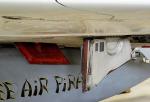
.jpg)
.jpg)
.jpg)
.jpg)
.jpg)
.jpg)
.jpg)
.jpg)
.jpg)
.jpg)
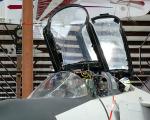
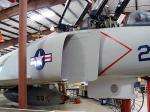
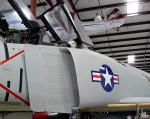
.jpg)
.jpg)
.jpg)
.jpg)
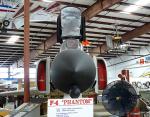

.jpg)

.jpg)
